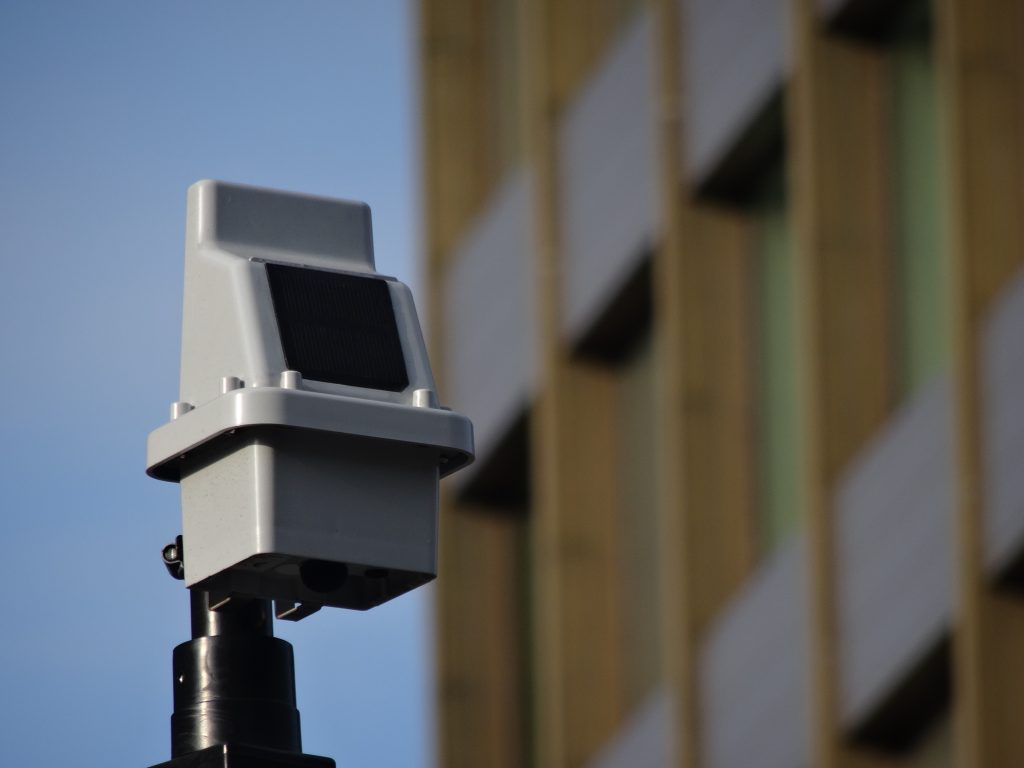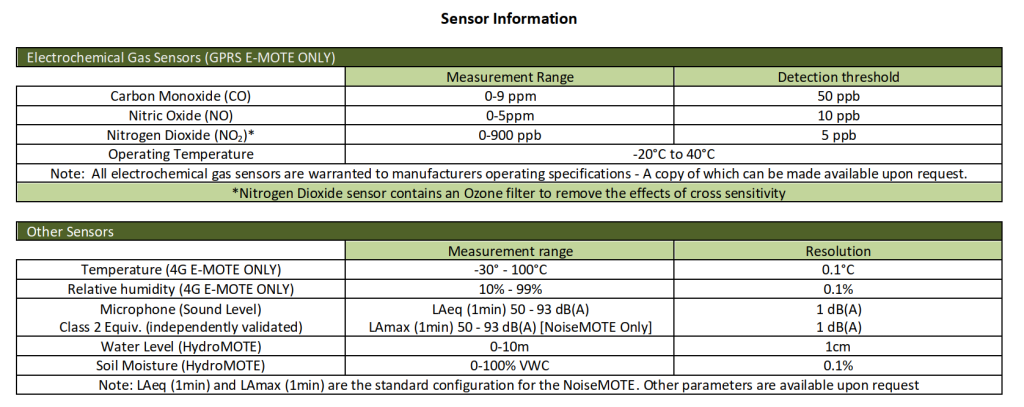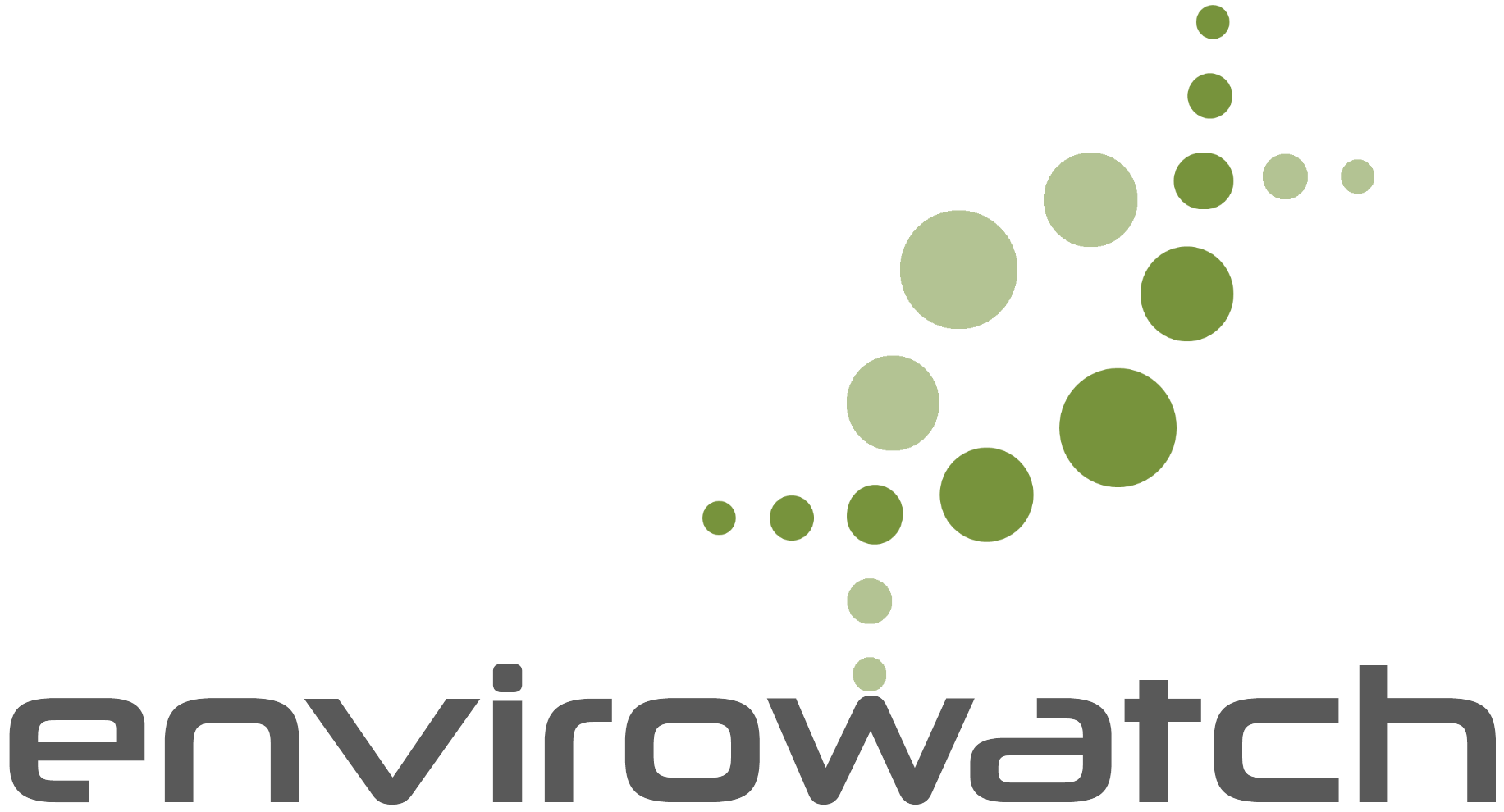Air Quality and Noise Pollution
The E-MOTE system was the first product launched by Envirowatch in 2010. It was designed to offer air quality and noise pollution monitoring without the inherent drawbacks of existing solutions. Traditional monitoring equipment is large, obtrusive and costly, limiting the spatial resolution of networks.
The E-MOTE solution uses many “motes” – small wireless devices typically deployed on lamp posts, and a “gateway” device which acts as a data collection and forwarding device. The E-MOTES record air quality and noise data every minute then communicate between each other and the gateway using a custom ad-hoc wireless communication protocols, based on the IEEE802.15.4 (ZigBee) standard. The Gateway then forwards the data from the E-MOTE using Cellular Communications to the EnviroView software located in the cloud. Stand-alone 4G enabled E-MOTE devices are also available, and are used in areas where less dense monitoring networks are required.
The E-MOTE devices report 60 second interval readings of Carbon Monoxide, Nitric Oxide and Nitrogen Dioxide, as well as noise levels and other environmental parameters.

The viability of this product as an effective environmental quality monitoring solution has been proven in various locations across the world. The largest active network at the time of writing is in Newcastle and Gateshead (UK) with over 130 motes. This solution provides high spatial and temporal resolution air quality and noise data which is representative of population exposure, in a very cost effective manner. With solar panel integration, deployment timescales are not limited by battery life.
With pervasive IOT type gas sensors data reliability often comes under question. Envirowatch Ltd. is committed to an on-going sensor reliability process to ensure sensor functionality and performance when benchmarked against high end monitoring equipment. We recently conducted a long term sensor evaluation alongside Newcastle, Sheffield and Oxford University. The E-MOTE sensor was found to demonstrate high levels of accuracy and precision in a highly polluted urban environment. For further details see below.
Pitch-In – Removing barriers to air quality IoT monitoring in cities (sheffield.ac.uk)
We have a number of example projects where Noise Pollution has been the primary focus for our clients. The noise sensor aspect of our product offering was assessed recently in the following publication:
• Marouf SS, Bell MC, Goodman PS, Neasham J, Neasham J, Namdeo AK. Comprehensive study of the response of inexpensive low energy wireless sensors for traffic noise monitoring. Applied Acoustics 2020, 169, 107451.

